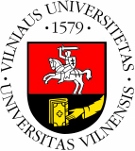Rare radio-isotopes can give valuable information in different scientific areas, from medicine to cosmic rays studies. This is the reason why Accelerator Mass Spectrometry (AMS) has been developed to perform analyses at highest sensitivities, able to detect radio-isotopes concentrations where other methods fail. AMS with 14C performs precise dating of objects of biologic origin using only very small samples reducing relic destruction. 10Be is a long lived isotope used in historical studies of samples from the last ten million years. It can also be used in geology and its high analysing sensitivity allows measuring the 10Be produced directly inside the rock by the cosmic rays. From only 1 ml of blood AMS can detect the aluminium (26Al) absorption in different human organs. 36Cl is a good atmospheric circulation tracer that can be detected by AMS. 129I has a reduced specific activity but high volatility and can be used efficiently as a tracer of nuclear pollution. The paper will present the method of AMS and will give the reader an introduction into the possibilities of using this analysing method in different research activities.
Currently selected
Browse articles
by Category
by Category
Abstracting & indexing:
















Studies and researches
2/2023
An Introduction to Hypersensitive Analysis by AMS
accelerator mass spectrometry, radio-isotope






